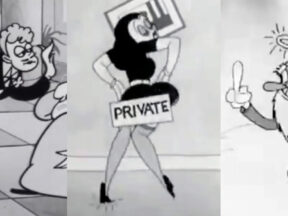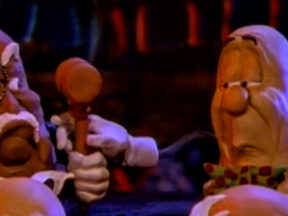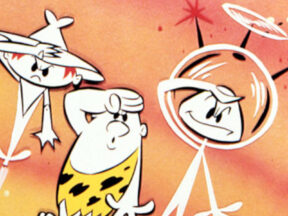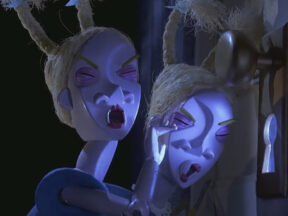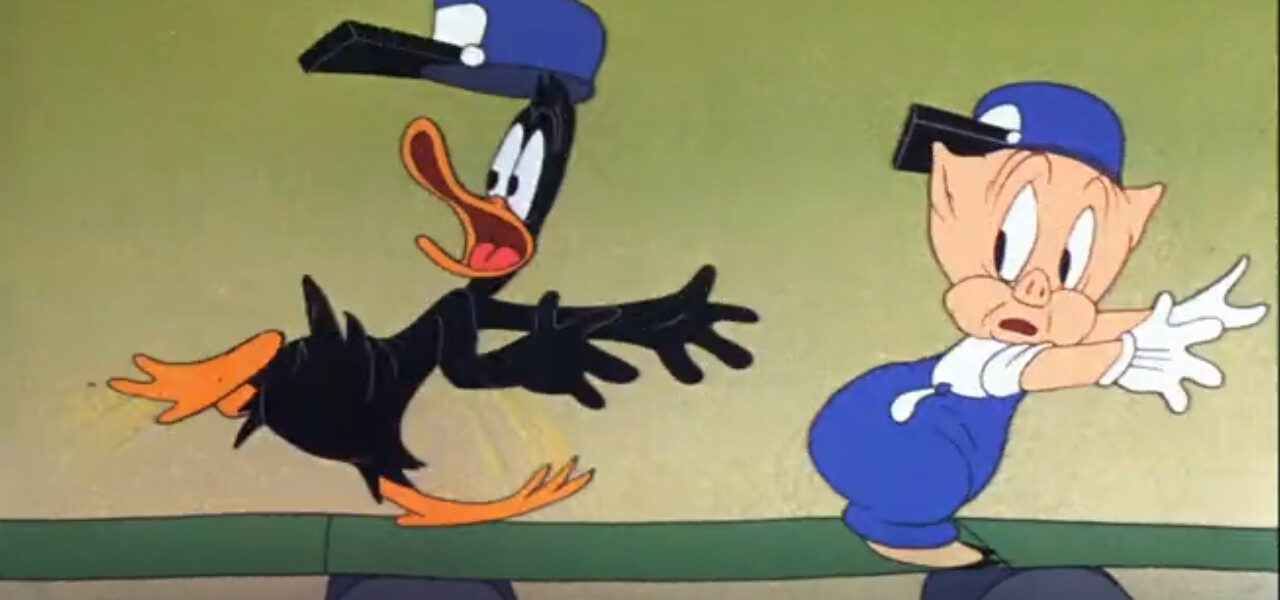
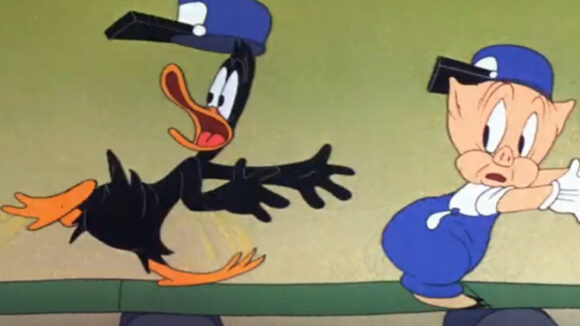
Happy Birthday To Raymond Scott’s ‘Powerhouse,’ The Most Iconic Song In Cartoon History
On February 20, 1937, Raymond Scott first recorded a tune called “Powerhouse.” You may not know it by name, but you’ll recognize the melody, which has been used in cartoons for 80 years. It was used by composer Carl Stalling in over 40 of the original Warner Bros. shorts, and it has become an iconic staple of animated films ever since.
The song is best remembered as the “assembly line” theme that has underscored countless animated films; you can hear it in the wonderfully deranged finale of Bob Clampett’s Looney Tunes masterpiece Baby Bottleneck (1946).
— Cartoon Study (@CartoonStudy) February 20, 2023
Raymond Scott will forever be associated with animation, and he has even been nicknamed “the man who made cartoons swing.” Ironically, he never wrote music for cartoons, and – according to his widow – he didn’t even watch them (the closest he came to directly working with animation was writing the jingles for three animated Country Fair Bread commercials in 1962). Scott was a composer and bandleader of the 1930s and ’40s, as well as a technical whiz and an early pioneer of electronic music. In this clip from a 1955 episode of Your Hit Parade, you can see “Powerhouse” performed in the flesh by the Raymond Scott Quintette (actually a sextet, but Scott told a reporter that “calling it a ‘sextet’ might get your mind off music.”).
— Cartoon Study (@CartoonStudy) February 20, 2023
I’m sure Raymond Scott never would’ve guessed that he was sealing his legacy when he sold his publishing rights to Warner Bros. Music in 1943. This little transaction gave genius composer Carl Stalling free reign to plug Raymond Scott’s melodies into his scores for the Looney Tunes and Merrie Melodies cartoons. The propulsive energy of Scott’s quirky instrumental jazz compositions made perfect fodder for the likes of Bugs Bunny and Daffy Duck, and Stalling found immediate use for his new library; Stalling’s first quotation of “Powerhouse” appears in the Frank Tashlin classic Porky Pig’s Feat (1943).
— Cartoon Study (@CartoonStudy) February 20, 2023
The peculiar strains of Raymond Scott’s music and the screwball slapstick of the Warner Bros. cartoons were a match made in heaven, although I’m sure part of what appealed to Carl Stalling was Scott’s penchant for descriptive titles. Instrumentals like “Reckless Night on Board an Ocean Liner” and “Dinner Music for a Pack of Hungry Cannibals” were readymade for inclusion in cartoon scores. Over a dozen different Raymond Scott compositions found their way into Warner Bros. cartoons. Here’s a sample:
— Cartoon Study (@CartoonStudy) February 20, 2023
Still, “Powerhouse” was the piece Carl Stalling returned to most frequently. There are actually two distinct sections of the song: Part “A” is the portion with the faster tempo and it suggests the whirring gears of a machine. Stalling used the frenzied mania of this section for chase sequences, like the bit where Bugs Bunny runs after a gremlin in Bob Clampett’s Falling Hare (1943).
— Cartoon Study (@CartoonStudy) February 20, 2023
Part “B” is the assembly-line riff, with a methodical driving beat that suggests a conveyor belt going off the rails. This section was used for factory scenes, like the memorable egg-laying sequence from Frank Tashlin’s The Swooner Crooner (1944).
— Cartoon Study (@CartoonStudy) February 20, 2023
With all of the crazy gadgets and contraptions that show up in the Looney Tunes cartoons (usually courtesy of the Acme Corporation), there were plenty of opportunities to showcase “Powerhouse.” The song worked particularly well for elaborate Rube Goldberg devices, like the one in Chuck Jones’ Trap-Happy Porky (1945). Raymond Scott crafted his idiosyncratic musical oddities with almost mechanical precision, so his music links up beautifully to these sorts of chain-reaction sequences, in which technical ingenuity is put to the service of ridiculous ideas.
— Cartoon Study (@CartoonStudy) February 20, 2023
Stalling also found use for the song in cartoons involving spaceships, jets, and robots. Shorts like Chuck Jones’ House-Hunting Mice (1947) spoofed the rise of post-war automation, and “Powerhouse” made the perfect theme for the terrifyingly unstoppable sweeping robot.
— Cartoon Study (@CartoonStudy) February 20, 2023
After the original Warner Bros. cartoon studio shut down in 1963, the use of Raymond Scott music in animation subsided for a while. TV cartoons of the 1960s, 1970s, and 1980s rarely used his work, with the one exception being the 1960s superhero spoof Batfink. Series creator Hal Seeger and composer Winston Sharples owned a stock music library called Scroll Productions, which controlled Raymond Scott’s publishing for a time, so his music was chosen to generate royalties. Unlike Carl Stalling’s scores, which were carefully matched to the onscreen action, Sharples’ arrangements of Raymond Scott’s music were played and replayed on the Batfink soundtracks somewhat haphazardly.
— Cartoon Study (@CartoonStudy) February 20, 2023
Following the success of Who Framed Roger Rabbit (1988), there was a resurgence of zany cartoons inspired by the old classics, and “Powerhouse” was resurrected. The producers of The Ren & Stimpy Show negotiated for almost a year to secure the rights to use the Raymond Scott catalog. Music supervisor Henry Porch insisted that Scott’s music “screamed animation,” adding, “Ren & Stimpy deals with abruptly changing emotions and attitudes, and Scott’s music easily keeps up, shifting gears at breakneck pace.” The 1992 episode “Mad Dog Hoek” uses Scott’s original 1937 recording of “Powerhouse” as background score. Director Bob Camp said of Raymond Scott’s music, “I put it on a lot when I’m drawing to put me in the cartoon mood.”
— Cartoon Study (@CartoonStudy) February 20, 2023
The four-minute Animaniacs episode “Toy Shop Terror” (1993) was set entirely to a new arrangement of “Powerhouse” by the late Richard Stone. Stone told an interviewer in 1996, “It’s a strangely wonderful piece of music. It’s like it was written on Mars.” He added, “I must tell you, the opportunity of standing in front of 40 pieces and hearing them play ‘Powerhouse’ was better than sex. It was the greatest moment in my entire life.”
— Cartoon Study (@CartoonStudy) February 20, 2023
The Simpsons has used “Powerhouse” four times, perhaps most memorably in “And Maggie Makes Three” (1995). Simpsons creator Matt Groening once ranked the song at #14 on his list of “100 Favorite Things.”
— Cartoon Study (@CartoonStudy) February 20, 2023
The cult Klasky-Csupo series Duckman also used “Powerhouse” for a conveyor belt scene in the 1996 episode “Aged Heat 2: Women in Heat,” where our hero is mistakenly sent to a women’s prison. The music in this sequence was altered in the dvd release due to licensing issues.
— Cartoon Study (@CartoonStudy) February 20, 2023
Even Disney got on the “Powerhouse” train, although not without running into some hot water for it. The animated opening titles of Honey, I Shrunk the Kids (1989) are set against a James Horner theme that sounds a lot like “Powerhouse,” which led Raymond Scott’s estate to threaten Disney with a lawsuit. Disney finally settled out-of-court and added Raymond Scott’s name to the cue sheets. Controversy aside, these animated titles by Bill Kroyer are wonderfully creative, combining hand-drawn animation with state-of-the-art computer effects.
— Cartoon Study (@CartoonStudy) February 20, 2023
Raymond Scott made another appearance on the big screen in the live-action/animated feature Looney Tunes: Back in Action (2003), arranged by Oscar-winning composer Jerry Goldsmith in his final film score. The addition of electric guitars makes a nice twist on the familiar melody.
— Cartoon Study (@CartoonStudy) February 20, 2023
“Powerhouse” was even used as the theme music for Cartoon Network’s commercial bumpers from 1998 to 2002, a fitting testament to Raymond Scott’s legacy in the world of animation.
— Cartoon Study (@CartoonStudy) February 20, 2023
“Powerhouse” was first used in a cartoon score 80 years ago, but animators are still finding new uses for it. In just the past few years, the HBO Max series Looney Tunes Cartoons and Bugs Bunny Builders have included it, and the song even featured on a recent episode of Spongebob Squarepants, titled “Broken Alarm” (2019). Spongebob musician Ego Plum cleverly arranged the tune to match the loopy musical sensibility of the show, performing the slide guitars, piano, percussion, and bass himself. Plum said it was no easy feat taking on what he considered “the most iconic piece of cartoon music in history.”
— Cartoon Study (@CartoonStudy) February 20, 2023
So on behalf of cartoon fans everywhere, we’d like to wish “Powerhouse” a very happy birthday. (Not that!! NOT HAPPY BIRTHDAY!!).
— Cartoon Study (@CartoonStudy) February 20, 2023

.png)
